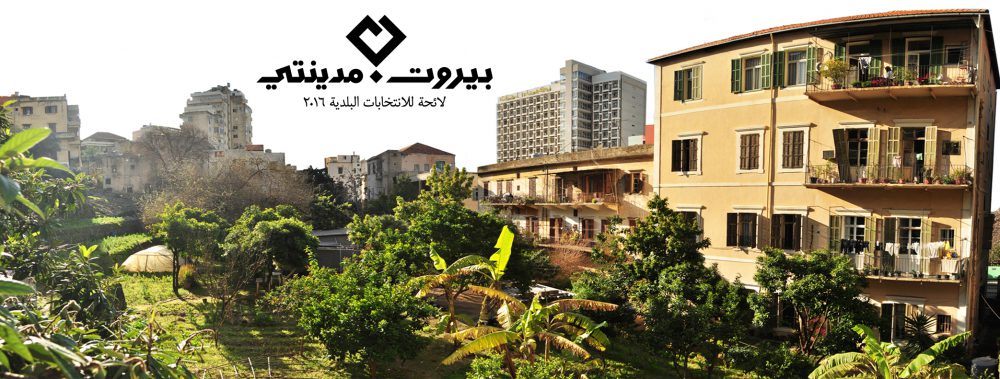These notes were written by experts who were consulted by the Elard consulting company, which is conducting the Environmental Impact Assessment (EIA) study of the Fouad Boutros highway project. These notes are comments on the Scoping Report of the EIA, and are supposed to be integrated in the revised and final scoping report, which will be the basis of the study’s scientific methodology.
Mobility vs. vehicular transport
- – The major issue is not about choosing between heritage preservation and improvement of vehicular traffic but between mobility and traffic solutions. The two major reference studies used by the CDR, IAURIF and UTDP, showed very clearly that the only pertinent solution for Beirut was four folds:
- Introduction of paid parking
- bridges at some congested intersections
- public transport surface solution such as buses on dedicated lanes
- mass transport solutions such as metroFrom the above items, only parking and bridges were realized in Beirut and strictly nothing was done at the level of public transport, while city strategies based on increasing the number of bridges and insuring parking spaces in the center were abandoned worldwide because they paradoxically lead to increasing the demand for vehicular space in the center.
- Unavoidable mid to long term solutions cannot be continuously postponed because they precisely are long term solution. The public transport issue should be initiated now to avoid catastrophic situations for the whole city and its economic and social development.
Alternative solutions
Alternative solutions, notably those with no impact on cultural and landscape heritage should be studied and economically evaluated , notably the missing link between Charles Malek and Emile Lahoud, improving Emile Lahoud intersection with Charles Helou, as well as improving Bechara-el Khoury axis as substitutes to the axis Fouad Boutros-Albert Naccache.
- A huge cost compared to the improvements brought to the city: the whole methodology presented in the scoping report is based on the assumption that the project is economically viable, while it seems obviously not. The budget of 70 million $ is a huge cost with respect to the expected improvement s it will bring. Such a cost is usually envisaged for bridges linking the two sides of large rivers or topographic major obstacles hindering the economic development at a city scale.
- Establishing a hierarchy between the different planned transport improvement projects is needed in terms of pertinence and cost: Boutros is one amongst many alternative solutions planned by the CDR. Improving Emile Lahoud/Charles Helou access to the city center, extension of Charles Malek to Emile Lahoud and Bourj Hammoud bridge are much less destructive to the urban environment. They can largely improve the vehicular traffic and be adopted before Fouad Boutros project.
Traffic Issues
- Alfred Naccache avenue accommodates today a dense community life with major facilities (ABC mall, Hotel Dieu, Universities). FB project will inject at ABC level a supplementary traffic in an already strongly saturated urban artery.
- The role that FB is expected to fulfill (linking South-Eastern suburbs to the City Center could be assumed by Bechara el Khoury (being turned into an expressway) and Emile Lahoud – Charles Helou that have a very large reserve of capacity , provided some improvements are brought to the latters.
Habib Debs
Architect – Urban planner
———————————————————————————————————-
- The objective of this project is not clear. There had been conflicting statements within the same session from the same persons which at times refer to this highway as “supplying access to the people of Achrafieh” and at other times “providing access/bypass for people in greater Beirut”.
- It has been declared that it will resemble Saleem Salam Tunnel.
- No Feasibility Study has been conducted.
- Other alternatives have not been explored.
- No O-D (origin-destination) surveys were conducted in order to update the traffic model, which confirms that the existing model does not consider the change in travel patterns and is thus not a reliable reference.
- Calibration and Validation of the model is a necessary pre-requisite which cannot be part of this ESIA, or completed within its limited timeframe or budget, but it is a separate exercise/ project.
- Phasing of the project is not clear
- The scoping report does not address any parking study. Parking is the essential problem along with driver behaviour.
- The scoping report does not specify the necessary thresholds below which the results of the traffic analysis are considered to be failing. Even so, any traffic analysis based on the model are not reliable.
- Public Transport has not been explored as a overall strategic solution. This is the crucial item which requires extensive studies and should be initiated as soon as possible. The budget set for this project can be easily deferred towards a viable bus service.
Ruby Mahdi
Transport Planner – Engineer
